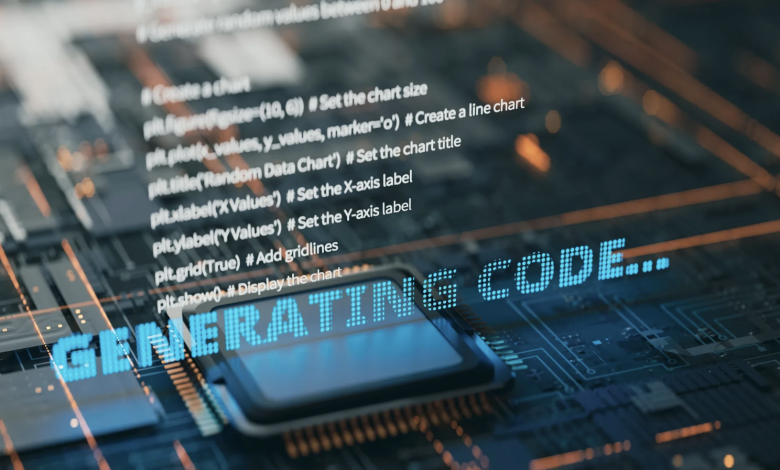
AI has rapidly moved from the margins of software engineering to the center of enterprise innovation. Generative AI coding assistants such as GitHub Copilot, Claude Code, and Cursor have changed expectations for how quickly applications can be delivered. What once required weeks of manual coding, debugging, and iteration can now be achieved in hours. The benefits are obvious for development teams that are under pressure to ship new features and meet business demands faster than ever before.
However, AI-generated code also creates significant new security concerns. Every snippet of AI-generated code is built on patterns drawn from massive public datasets, many of which contain outdated practices or embedded vulnerabilities. When these fragments are stitched together into production-ready applications, enterprises may unknowingly import the mistakes of thousands of anonymous developers. The very tools designed to make teams faster are also making it possible to scale risk at unprecedented speed.
Rapidly Scaling Vulnerabilities
Traditional development cycles allowed for layers of oversight: peer reviews, static analysis, and staged releases. While these processes were not foolproof, they created multiple opportunities to catch defects before they became systemic.
AI-generated code sidesteps those checkpoints. Developers are increasingly pasting AI suggestions directly into repositories, often under the assumption that the output is safe. This false sense of security is dangerous. According to Gartner, by 2027, 25% of software defects will stem from inadequate oversight of AI-generated code. That is not a marginal figure. It suggests that a quarter of all vulnerabilities could soon trace back to a technology intended to make us more productive.
We also can’t ignore the compounding nature of this risk. A single insecure snippet generated by AI may be replicated hundreds of times across an organization’s applications. In effect, enterprises are multiplying vulnerabilities at the same rate as adding features, creating a problem that scales alongside innovation.
The Strain on Security Teams
Security teams were already stretched thin. Many organizations maintain vulnerability backlogs that number in the tens of thousands. Analysts report spending more time triaging alerts than fixing issues, leading to alert fatigue. In this environment, the influx of AI-generated code and risks are an exponential challenge.
The scanners and static analysis tools that security teams have relied on for decades were not designed for this new development velocity. They generate long lists of issues, many of them false positives, without offering meaningful prioritization. When AI accelerates code development, those lists balloon overnight. The result is a cycle where developers become frustrated by “security roadblocks” and security teams feel increasingly outpaced by the innovation they are tasked to safeguard.
The human toll is significant. Burnout among security professionals is rising, and enterprises face chronic talent shortages in critical areas such as application security. Without intervention, AI-generated code threatens to widen this gap, pushing already overextended teams into unsustainable territory.
Governance Without Stifling Innovation
In that case, how can we reduce these risks without slowing down the business? A blanket ban on AI coding assistants would be counterproductive and nearly impossible to enforce. Developers will continue to use these tools because they offer undeniable benefits in productivity and creativity.
Instead, enterprises must focus on adopting governance frameworks that align AI-driven development with their organizational risk tolerance. This begins with creating policies to define when and how AI-generated code can be used. Policies should specify acceptable use cases, require code review for sensitive systems, and mandate security testing for all AI-assisted contributions.
Adding technology guardrails is also critical. Automated checks can flag insecure patterns before they are committed, much like spellcheck highlights written typos. Embedding these controls directly into the development pipeline helps developers receive feedback early and reduces the likelihood of systemic flaws later.
Most importantly, governance should not represent bureaucracy. The aim is not to slow developers down but to give them confidence that their AI use is responsible, accountable, and aligned with enterprise objectives. Striking this balance requires close collaboration between engineering, security, and leadership teams.
Lessons From Early Adopters
Some organizations are already learning how to thrive in this new environment. Enterprises experimenting with AI-aware application security posture management (ASPM) have found that integrating context across the development lifecycle can dramatically reduce noise. By correlating vulnerabilities to business risk and automating triage, these companies have cut alert fatigue by up to 70% and reduced vulnerability backlogs by as much as 80%.
These improvements reflect a broader cultural shift in how organizations think about risk. Instead of chasing every potential flaw, security teams are learning to prioritize the vulnerabilities that truly matter to their applications and customers. This shift requires courage from leadership, who must be willing to accept that not every issue can, or should, be fixed immediately. It also requires transparency across teams, so that developers and security analysts are aligned on priorities.
Real-world examples show that enterprises that adapt quickly are gaining an advantage. They deliver software faster, with fewer critical defects, and with a more resilient security posture than their competitors.
Preparing for What Comes Next
We are still in the early stages of the AI coding transformation. The capabilities of these systems will only improve, and their adoption will spread far beyond early adopters. As this happens, enterprises must be prepared for their future risks.
Regulators are also taking notice. Just as industries have faced compliance requirements around data protection and privacy, we should expect similar scrutiny of AI development practices. Organizations that implement governance and risk management now will be better prepared when those requirements become law.
Moreover, the talent pipeline must also evolve. Developers entering the workforce should be trained not just to use AI tools but to understand their limitations. Security teams should receive education on how to evaluate AI-generated output, identify common flaws, and communicate risks in terms that resonate with business stakeholders. By investing in workforce readiness, enterprises can build resilience that technology alone cannot provide.
AI-generated code is here to stay. It is becoming a permanent part of how software is built. Like open source before it, this shift is reshaping the industry. For security leaders, the challenge is to recognize the speed and innovation AI brings, along with the risks it introduces. That means putting smart guardrails in place, strengthening security practices, and preparing teams to work in an AI-driven environment.
The future of software development will be written by humans and machines together. How secure and resilient that future becomes depends on the choices we make now.




